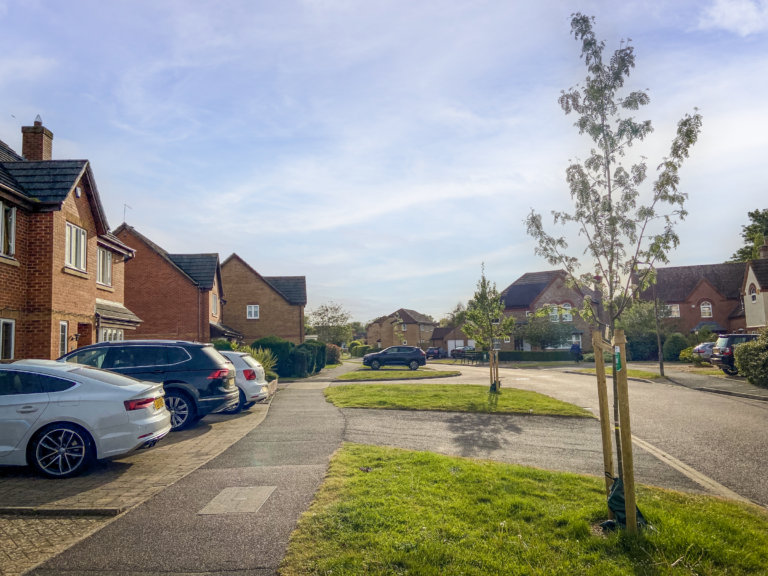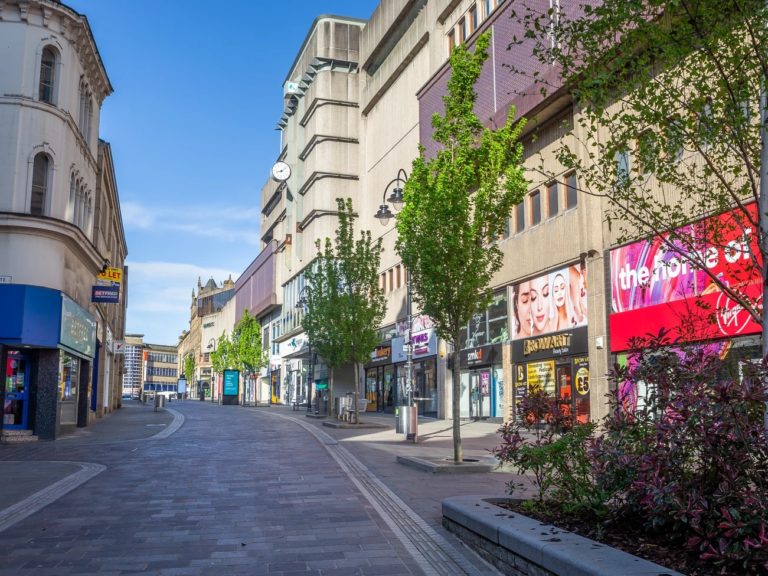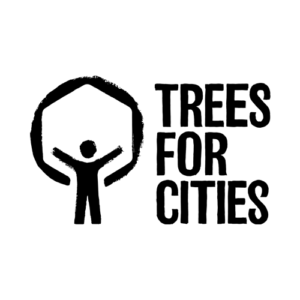In a world where the number of cars is growing and the number of people living in urban areas increases, tacking air pollution is one of society’s biggest challenges. Air pollution not only impacts human health, but the health of our planet too, and even has a hefty economic price attached.
In this blog post, we will look into the detail of how exactly trees can help improve air quality in our towns and cities. We’ll look at how the problem of air pollution is getting worse, even with moves to reduce reliance on fossil fuels. To understand the issue better, we spoke to experts in the field of public health research, and air quality science.
What causes air pollution?

The main cause of air pollution in urban areas is transport. The vehicles that fill our streets are mostly fuelled by petrol and diesel. These fossil fuels not only harm the climate by releasing carbon dioxide but release other harmful toxins that damage human health.
Although the mandatory move to electric vehicles in 2025 will reduce these emissions, it won’t remove the particles released by the wear of rubber tyres on road surfaces. This is set to increase due to the increased weight of electric vehicles and the growing number of cars being used. The Department for Transport projects a 17-51% increase in road traffic in England and Wales by 2050 relative to 20154.
The impact on human health
Air pollution killed 9 million people globally in 2019, and new data from the WHO shows that 99% of the world’s population is affected by it. They’ve termed it ‘the new tobacco’, except it’s something we can’t escape.
Here in the UK, our towns and cities suffer from extremely high levels of air pollution that regularly exceed the safe levels set by the government. Air pollution is estimated to cause 40,000 deaths annually in the UK. It’s a major cause of diseases such as asthma, stroke, heart disease, some cancers and respiratory diseases.
Anyone with an existing health issue, along with the very young and elderly, will suffer the most. But the fact is that harmful gases and tiny particles in the air make their way into our lungs and can have a profound effect on our short and long-term health.
How air pollution is measured
Particle Matter (PM) refers to everything in the air that is not gas. It consists of chemicals and compounds, many of which are toxic. Some PM are so small they can enter our bloodstream and cause damage to the brain, heart and other organs. These particles are measured according to their size, and across UK and Europe there is a focus on particles that are less than 2.5µm – known as PM2.5.
99.8% of the population in European cities is exposed to PM2.5 levels above the maximum recommended by the World Health Organization. You can check the levels of air pollution in cities throughout Europe here.
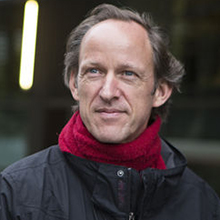
Mark J Nieuwenhuijsen is a Research Professor and a director of Urban Planning, Environment and Health at the Institute for Global Health (ISGlobal) in Barcelona. As a world-leading expert in environmental exposure assessment, epidemiology, and health impact assessment, his particular area of interest is healthy urban living.
In his article Why Cities Need Green Space More than Ever? , he states:
“Green space is particularly important in the post-pandemic world. Along with the many other benefits that green spaces offer us, the reduction of air pollution and noise pollution is crucial” 1.
The economic impact
Any widespread cause of public illness has an impact on health services. In the UK it is estimated to cost the NHS £20 billion each year2. Trees can help offset this.
Research by the London i-Tree Eco Project calculated that the capital’s 8.4 million trees collectively deliver benefits of over £130 million per year3. The same study found that across the UK, the strategic planting of trees and other vegetation to mitigate against air pollution saves around £1billion through health provision and improved workforce productivity.
improving air quality
Much of the literature published about how trees, and vegetation in general, help improve air quality has been based on a theory known as ‘deposition’. However, it is becoming more accepted it isn’t quite this simple! A process known as ‘dispersion’ may be more significant.
Understanding the difference between deposition and dispersion is important because it helps us understand exactly how we can use trees strategically to minimise air pollution and all its harmful effects.
Deposition
Just as trees absorb C02 that is released by the burning of fossil fuels, they can also absorb other harmful gases and pollutants.
The scale of pollution released in an urban area compared to the volume that a single tree can absorb is extreme, however. An individual tree will therefore have a modest effect on local air quality.
That’s why we need more trees in as many of our streets as possible, to multiply this effect across our neighbourhoods and cities.
Dispersion
When planted close to roadways, trees and other vegetation can partially block or ‘disperse’ harmful pollutants from reaching pedestrians.
A 2018 independent review5 of the research by DEFRA’s Air Quality Expert Group concluded that this is the main way in which trees can reduce local exposure to pollution in urban areas – by creating a partial barrier between humans and road traffic.
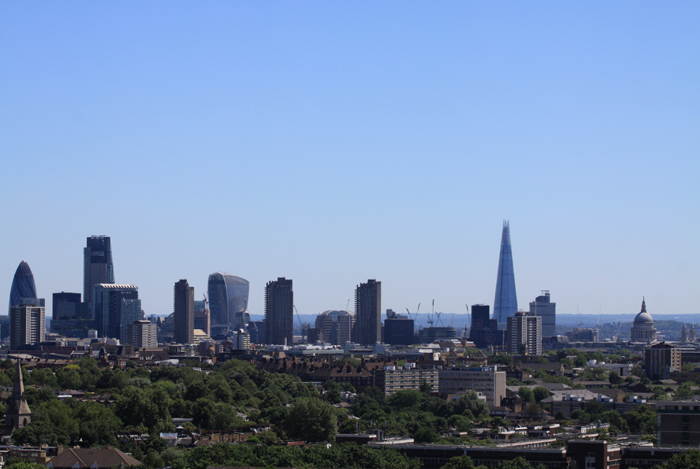


How trees can help

While the best approach to reducing air pollutants is to stop them at the source, it isn’t always possible to do this efficiently in our towns and cities.
Higher concentrations of pollutants are found at the source of emissions – roadsides. This is also the area where there are more people, so this is where it’s most effective to block them.
This is where trees can help.
When planted in the right locations, under the right wind conditions, trees create a partial barrier between pedestrians and emissions6. Recent studies have shown that this reduces local exposure to nearby emissions. Through redistribution, they force some of the polluted air to a different path, away from people who are in the immediate pathway.
The right tree, in the right place
For this approach to work effectively, it comes down to local and regional factors.

Dr James Levine, Senior Research Fellow in School of Geography, Earth and Environmental Sciences, University of Birmingham explains that many factors can influence dispersion:
“Things like the geometry of nearby buildings and wind direction aloft determine the flow of polluted air. In the wrong location, tree planting could even unintentionally increase exposure to pollutants. That’s why it’s so important that experts are involved in planning where trees are planted.”
Dr Levine led the development of the Green Infrastructure for Roadside Air Quality GI4RAQ Platform, an open-source software programme that helps non-specialists assess the impact of proposed planting schemes on roadside exposure to vehicular emissions via pollutant dispersion7.
Several of our council partners with are actively planting trees to help combat air pollution in their area, and have made this practice an integral part of their overall tree strategy. One such example is Barnet Council.
The bigger picture
Reducing pollution will not only improve human health, but it will also help improve the health of our planet too.
Trees bring so many benefits to our urban landscape and the wider environment.
From increased biodiversity to urban areas, to improved drainage on our streets, and shelter from the sun to help avoid that ‘heat island’ effect that can cause so much discomfort during increasingly hotter summers. They improve the health and wellbeing of everyone who lives nearby.
Help improve air quality in your neighbourhood
Sources:
[1] https://www.isglobal.org/en/healthisglobal/-/custom-blog-portlet/-por-que-las-ciudades-necesitan-espacios-verdes-mas-que-nunca-/4735173/0
[2] https://laqm.defra.gov.uk/documents/air_quality_note_v7a-(3).pdf [3] https://www.itreetools.org/support/resources-overview/project-profiles/valuing-londons-urban-forest
[4] https://assets.publishing.service.gov.uk/government/uploads/system/uploads/attachment_data/file/873929/road-traffic-forecasts-2018-document.pdf
[5]https://ukair.defra.gov.uk/assets/documents/reports/cat09/1807251306_180509_Effects_of_vegetation_on_urban_air_pollution_v12_final.pdf
[6] https://airqualitynews.com/2019/10/04/why-green-infrastructure-is-critical-for-improving-air-quality/
[7] https://www.mdpi.com/1999-4907/12/6/769 Image credits: Mark J Nieuwenhuijsen - ISGlobal Dr James Levine - University of Birmingham

